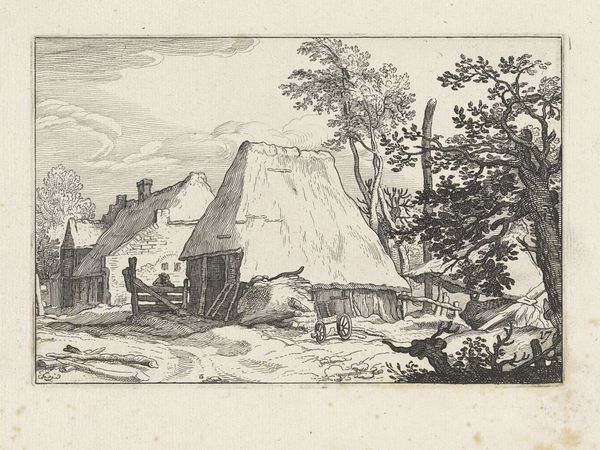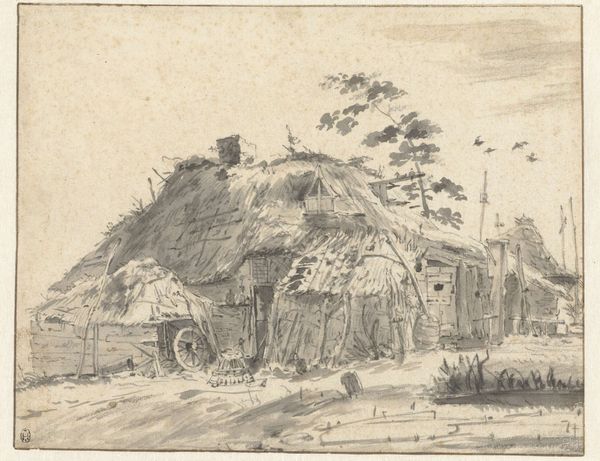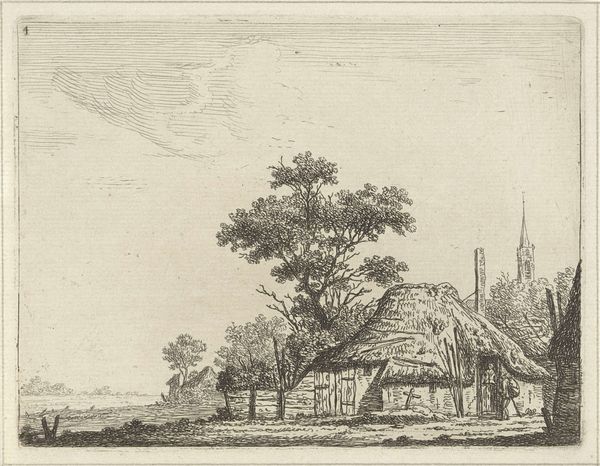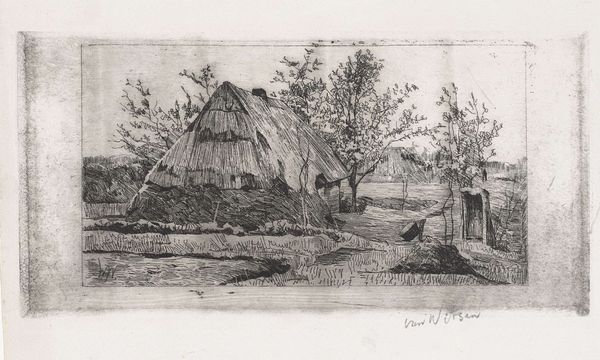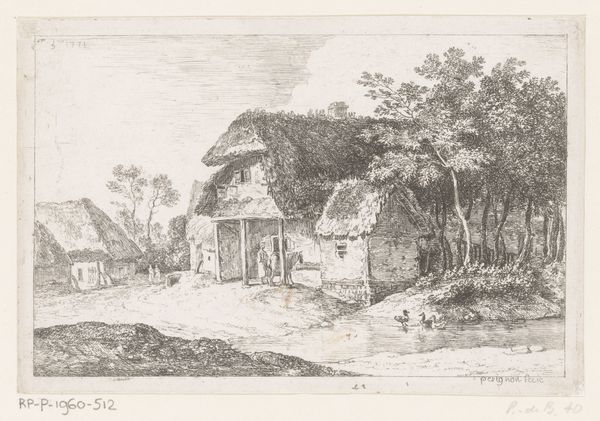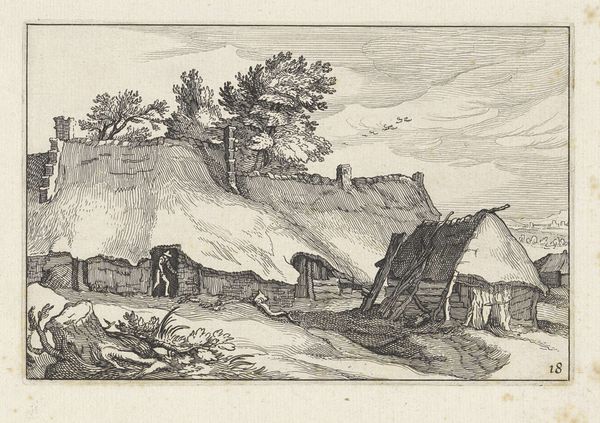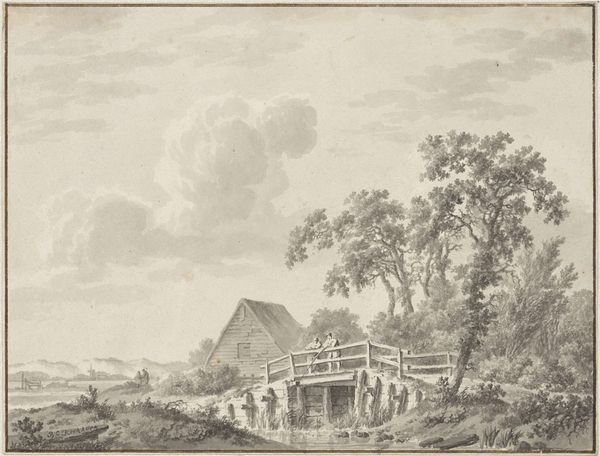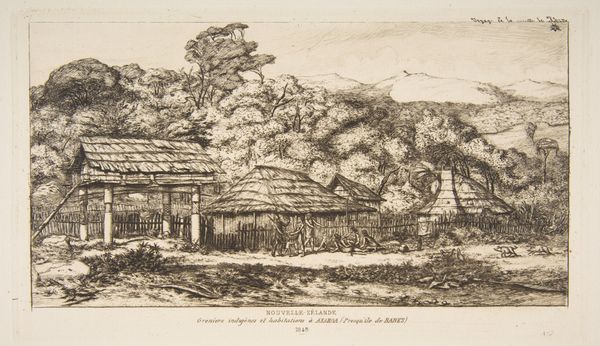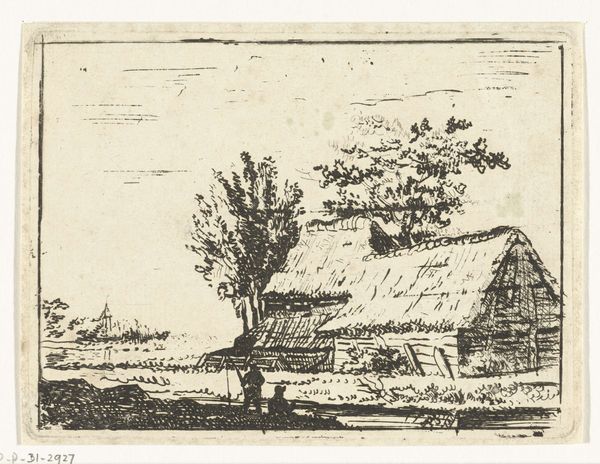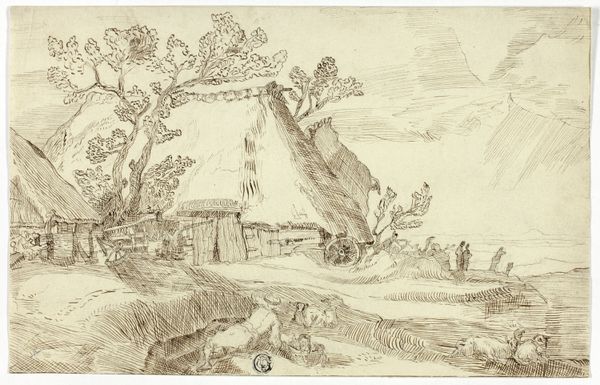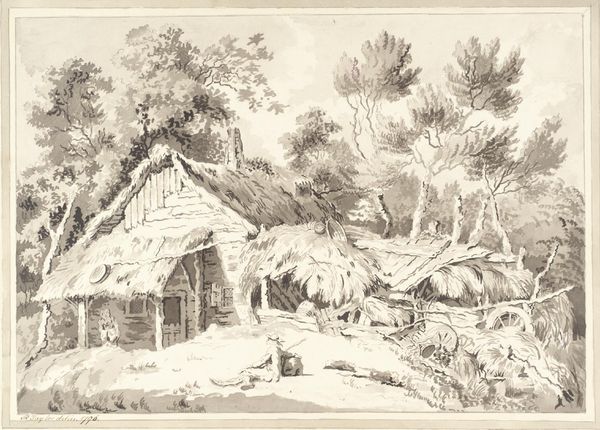
drawing, print, etching, paper, ink, woodcut
#
drawing
#
baroque
#
dutch-golden-age
# print
#
etching
#
landscape
#
paper
#
ink
#
woodcut
Dimensions: 128 mm (height) x 198 mm (width) (plademål)
Curator: This is Jan van de Velde the Younger’s 1616 etching and woodcut, “Landscape with a dilapidated barn,” currently residing here at the SMK. The detail in the thatched roof and the figures along the river are striking. Editor: There's a certain melancholic quality to it, isn’t there? That tilted, broken-down structure... it evokes a sense of transience, the fleeting nature of things. Curator: The choice of printmaking allows for multiples, bringing images like this to a wider audience. Consider the process of etching and woodcutting itself - the labour, the deliberate marks made by the artist's hand in the creation of this piece. What stories do the marks themselves tell about the means of Dutch Golden Age production? Editor: Absolutely. I see it as a window into the rural 17th-century Dutch landscape. The peasants in the foreground, the dilapidated barn, all speak to the social hierarchy of the time and to the changing relationship between humans and the land as urbanization increased in Dutch society. What power dynamics are in play? Curator: Van de Velde’s expertise with the line. He modulates tone and texture with varied cross-hatching, all from carving into blocks or metal. I'm particularly fascinated by the interplay between the formal structures of artistic production and its role within a burgeoning Dutch marketplace. Editor: The broken roof is symbolic, representing decay and change, maybe reflecting on societal anxieties and environmental transformations within the broader context of Dutch history. Curator: Think about access. How would someone come across this image in its original moment? What did these prints *do* within domestic spaces or perhaps even commercial ones? Did such a "melancholy" subject sell, or was it meant to represent values outside a financial transaction? Editor: The imagery of ruin may be indicative of shifting agricultural landscapes or economic hardships faced by the lower classes, offering social commentary that resonates beyond the aesthetic appeal. Curator: It reminds me of the subtle nuances found within other commodities circulating at the time – goods tied to systems of labor and production— the sugar, the porcelain...even the paintings themselves. Editor: This image invites us to contemplate the socio-political dimensions of rural life, challenging us to think critically about how it intersects with narratives of gender, class, and social transformation in early modern Europe. Curator: Right. It all becomes incredibly poignant considering the time it was produced and what was coming. Thanks for helping me to consider new connections here. Editor: My pleasure! Seeing art as inherently entangled within social movements adds richer layers to our experience.
Comments
No comments
Be the first to comment and join the conversation on the ultimate creative platform.
